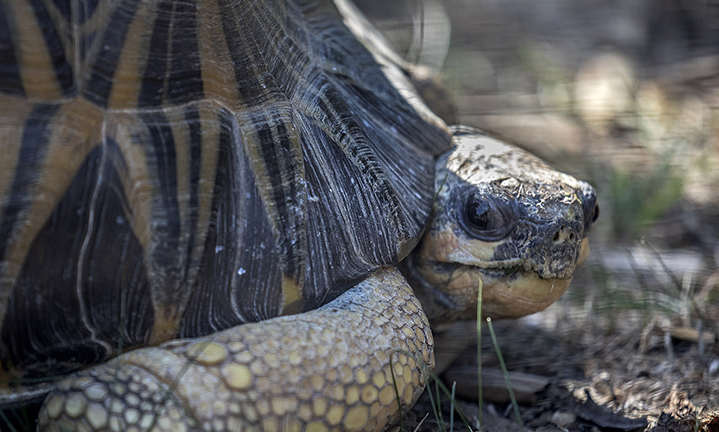Radiated tortoise
Astrochelys radiata

At the Zoo
Koret Animal Rescue and Resource Center
Fascinating Facts
- While native to Madagascar, radiated tortoises have been introduced to Réunion island and Mauritius. The oldest known radiated tortoise was “Tu’i Malila”, who was reportedly a gift from Captain James Cook to the Tongan royal family in 1777. While on a royal visit in 1953, Queen Elizabeth was introduced to Tu’i Malila. Tu’i Malila passed away in 1966 at the estimated age of 188 and her preserved body is still on view in the Tongan National Museum.
Physical Characteristics
The average radiated tortoise is approximately 35 pounds and 16 inches in length at adulthood. Extremities are yellow and the carapace, or shell, is black with a yellow star-like pattern radiating from each scute. Their beautiful shells make them a prime target for the illegal pet trade.
Diet
They graze on vegetation, including grasses, fruits and succulents.
Habitat
Radiated tortoises live in scrublands and spiny forest.
Range
They are found at the southern tip of Madagascar https://www.iucnredlist.org/
Social Behavior
Male radiated tortoises must be 12 inches in shell length before mating. Females will dig a hole and deposit 3 – 12 eggs. Incubation takes between 4.5 – 7.5 months. Juveniles are 1.25 – 1.6 inches in length at hatching and are off white in color. The average radiated tortoise can live between 40 – 50 years, although there have been tortoises who have lived much longer. (See “Fascinating Facts” above.)
Status In The Wild
IUCN – Critically Endangered
Other
Radiated tortoises are threatened by habitat destruction and fragmentation, collection for the pet trade, and being hunted for food.
